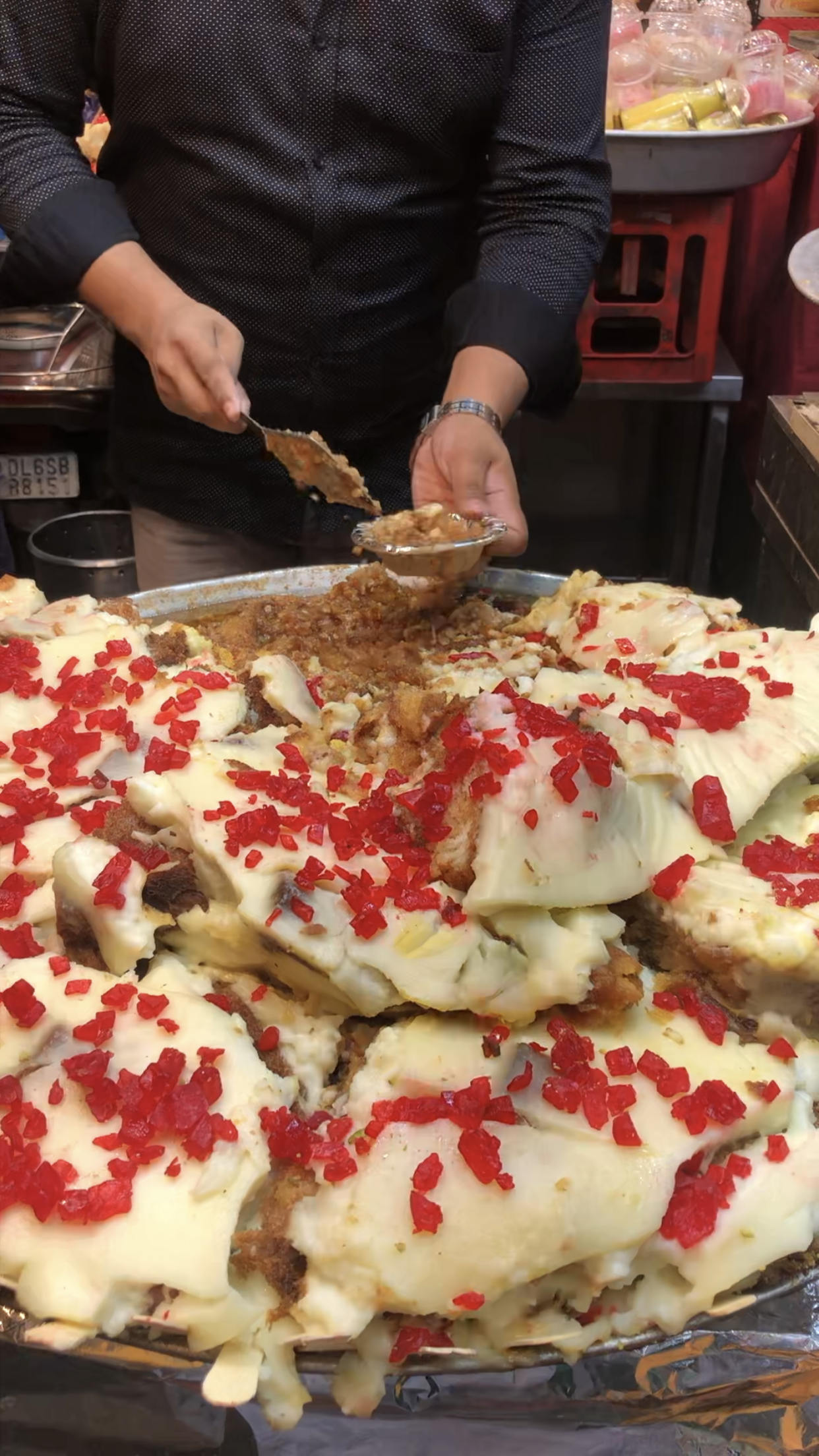While the origin of Shahi Tukda has multiple theories, we find mention of a similar dish in ancient Egypt called Um Ali, which was a bread pudding made by mixing stale wheat bread, nuts, milk and sugar, and baking it in the oven. Another variation is the Middle Eastern bread pudding called, Eish es Serny, also called the palace bread. Eish es Serny is prepared by drying a loaf of bread. After it is dried, it is sliced and brought to gentle boul in a syrup made out of honey and sugar. To serve, it is garnished with Arq-e-Gulab and golden caramel.
It was brought into the Indian subcontinent by the Mughals. Historical evidence suggests that Shahi Tukda was a favourite of the Mughal emperors to break fast with in the month of Ramazan. This tradition has continued even in today’s time with Shahi Tukda being a popular sweet dish for iftar in Northern regions of the country. In Old Delhi, especially during Ramzan, you will find the sweet smell of sugar syrup and a strong whiff of pure desi ghee from Shahi Tukda emanating from the lanes of the old city. Served usually with mango ice cream or rabri, shahi tukda is indeed the perfect end to any meal!




